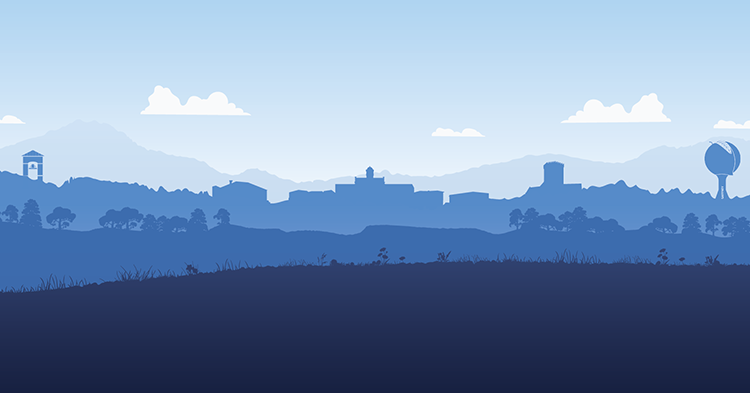October 31st, 2022
What to Expect in a Fine Arts Curriculum

Whether you have the opportunity to prepare an individual performance or exhibit, contribute to a collaborative presentation, or manage an arts venue, the university arts experience prepares you for an exciting career in the visual or performing arts. A fine arts curriculum immerses you in the field. Your lessons and classes help you develop performance and production skills unique to your area of concentration. And you learn the history and theory behind the colorful, exhilarating role that the fine arts play in culture and society. Core arts courses are complemented by general education courses in subjects such as English, math, history, and science.
Among the courses you will find in a fine arts curriculum are:
Studio Art
Studio art may include drawing, painting, pottery, graphic design, illustration, photography, printmaking, and sculpture. Your coursework will help you hone your technique and develop your personal vision as an artist. And within each concentration, you learn its multiple facets. For example, in painting, you may use charcoal, watercolors, or acrylic. You might create self-portraits, still life, landscapes, or seascapes. There’s a lot to learn! And there’s more to this craft than creating beautiful pieces of artwork. To become a professional artist, you need to exhibit, promote, and sell your masterpieces to the public. The studio arts curriculum emphasizes artistry as a profession, including how to plan exhibitions, design promotional materials for your work, and give an artist’s lecture. Classroom work may be supplemented with field trips, artist seminars, and a capstone art exhibition.
Music
A music curriculum provides you with the opportunity to develop musicianship and performance skills through personal, professional, and academic engagement with various kinds of music. Building upon those basic skills, further coursework includes studies in composition, arranging, and conducting. Piano classes help you develop skills that aid your successful completion of these courses, and you can hone skills performing on your particular instrument, whether vocal or other. Performances in solo recitals and in large and small music ensembles each semester provide outlets for you to share your growing talent with the community. Benchmarks such as entrance, exit, and junior qualifying exams help monitor your growth and development while you pursue your passion, develop your musical style, and expand your talent.
Theatre
A theatre arts curriculum is 360 degrees, immersing you in experiential learning through dramatic performance, technical knowledge, design skills and stage management. You will experience vigorous coursework, roles as a performer or crew member in staged shows each semester, and participation in regional festivals. You can gain substantial experience with theatre classics, as well as new works. The depth and breadth of theatre program experiences lay the foundation for pursuing graduate study or for acting or working crew professionally.
Creative Writing
Through the curriculum of a creative writing program, you develop the craft of writing and explore various genres including creative nonfiction, poetry, fiction, graphic and hybrid forms, and professional writing. Many programs now include hands-on curriculum in editing and publishing and offer internships to help prepare you for a career in the field. You will study under published writers, hone your communication and critical thinking skills, and join a community of committed writers. As you work your way through the program, you can tailor the curriculum to a preferred genre or to editing. Throughout your program, you will create a portfolio of creative work, professional writing, and samples of editing and publishing accomplishments. You can use this portfolio to launch your career or apply to graduate school.
Careers in Fine Arts
What can you do with a degree in fine arts? According to the U.S. Bureau of Labor Statistics, the top employing occupations for people with a performing or fine arts degree are teaching, art direction, entertainment and recreation management, and graphic design. With a fine arts degree, you could also work in a museum, art gallery, or library. You could work as a journalist or grant writer, an art consultant or a window dresser, a playwright or a literary editor. The publishing industry is packed with professionals who majored in creative writing. These careers include copy-editing, literary agenting, working as editors and assistant editors in large publishing houses, independent presses, scholarly journals, literary magazines, popular magazines, and all forms of digital media. Many of these professionals publish their own creative work along the way.
Limestone University offers a fine arts program with majors in studio art, music, theatre, and creative writing. Our faculty and staff provide you with a high-quality arts education within a liberal arts curriculum that emphasizes creativity and personal enrichment. Click the button to learn more.
